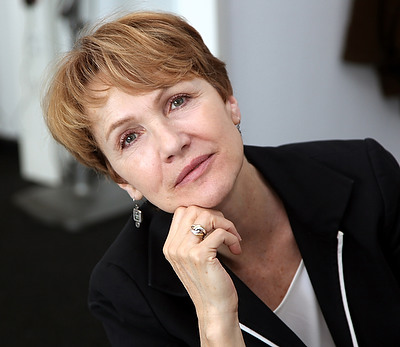Atspausdinta iš: http://www.old2.pressphoto.lt/lt/naujienos/what_is_a_good_picture?
What is a good picture?
pressphoto.lt :: Naujienos :: What is a good picture?
What is a good picture? This is the eternal question, one that involves emotion and intellect, in that order.
The most important element an image can have is the ability to make people feel, learn or ask questions. I am speaking of things like the utter simplicity of faces, nature, shadows and light or the more complex layering that creates a tableau, inviting us to ‘travel’ within a photo for a long time. The human being reacts to visual stimulation first through unfiltered emotion and then the intellectual process begins to take over, to examine more closely.
Evoking a reaction is the ultimate test of a good photo. It might surprise photographers to learn that during major photo competitions an image stays on the screen only a few seconds before it is decided ‘in’ or ‘out’. It is also the amount of time that a reader takes before turning a page of a newspaper or magazine, or moves on to something else on the computer screen.
The plethora of sources that deliver photographs to newspapers, websites, television stations (and contests) makes for a highly competitive field. It pits literally thousands of images a day against each other, vying for attention and space.
(By the nature of our business we are always obliged to take photos that record an event that is dull, to record an event that does not really lend itself to a ‘good’ photo. We can, however, always find a way to improve the situation by waiting for the right moment, avoiding stiff clichés, and taking chances with our photography.)
The truly good photo must speak for itself in the first instance, and be accompanied by a substantive caption. It has to provoke, ask a question, make you want to know more, make you laugh or teach you something you did not know. It has to mean something. The ultimate question – what was the photographer trying to say, and did he/she succeed in communicating? In documentary photography it needs to bring an essence of a situation, and in social situations or disasters it should have the capability of urging people or governments to take action, even in some small way.
In sports, there is action, passion, reaction, scandal, money – it is a microcosm of life that supplies ample opportunity to involve the viewer.
Unfortunately technique over substance has a fascination for many photojournalists who seek only the detached graphic elements in reportage, war zones, sports, culture or any other subject for that matter. In photographing man in his many aspects, we need to achieve a connection; in photographing nature (flora) or graphic elements we need to feel the beauty of colors, lines, forms. With animals it is the ability to convey the ‘nature of the beast’.
Abstraction in photography also has a valid and important place, but the use of the abstract must also bring with it the aesthetic quality that has the power to hold one’s attention. It should not be a gimmick; it should be as natural as a brush stroke.
Photo editors hold no small role in this process and must be instrumental in the process, before and after.
All of the memorable photographs in our profession that each of us holds in our heart and mind are those that have had an effect on us or changed the course of events. And it is the heart and mind that allow us to produce such images now and in the future. Without an active interest in the world around us or a constant need to learn and teach we will have done the world and ourselves a disservice.
Maria Mann
Maria Mann, Managing Editor (European Pressphoto Agency).
Frankfurt, 17 July 2008
Kalbama ne apie vaizdus
Jei ir yra tokia sritis, kurioje fotografas nieko negali pasakyti daugiau, nei gali pamatyti mūsų pačių akys, yra ir tokia, kuri įrodo, kaip mažai mums leidžia pamatyti tos mūsų akys.
Dorothea Lange, (1895–1965)
„Rašymas – kalbėjimas ne apie žodžius. Spauda – ne apie pigmentus. Muzika – ne apie natas. Tol, kol fotografai teigs, jog fotografija – tai tik nuotraukos, šis menas bus ribotas ir uždaras.“
Brooks Jensen, Lenswork (Numeris 18, 1997 m. vasara)
It’s Not About the Images
While there is perhaps a province in which the photograph can tell us nothing more than what we see with our own eyes, there is another in which it proves to us how little our eyes permit us to see.
Dorothea Lange, (1895 – 1965)
“Writing is not about words. Painting is not about pigments. Music is
not about tones. As long as photographers insist that photography is
about photographs, the art is limited and self-containing.”
Brooks Jensen, Lenswork (Issue 18, Summer 1997)



